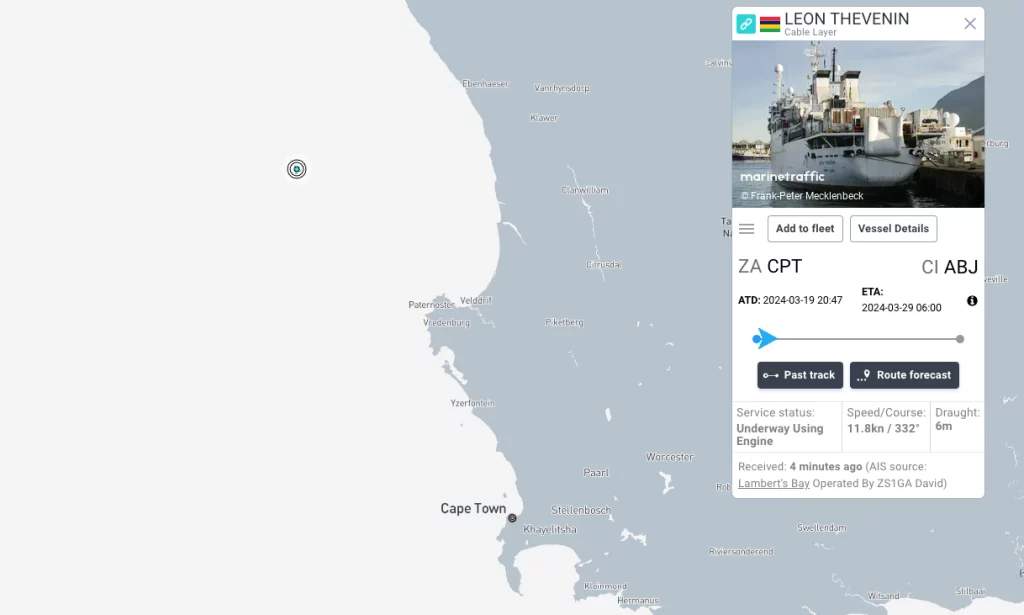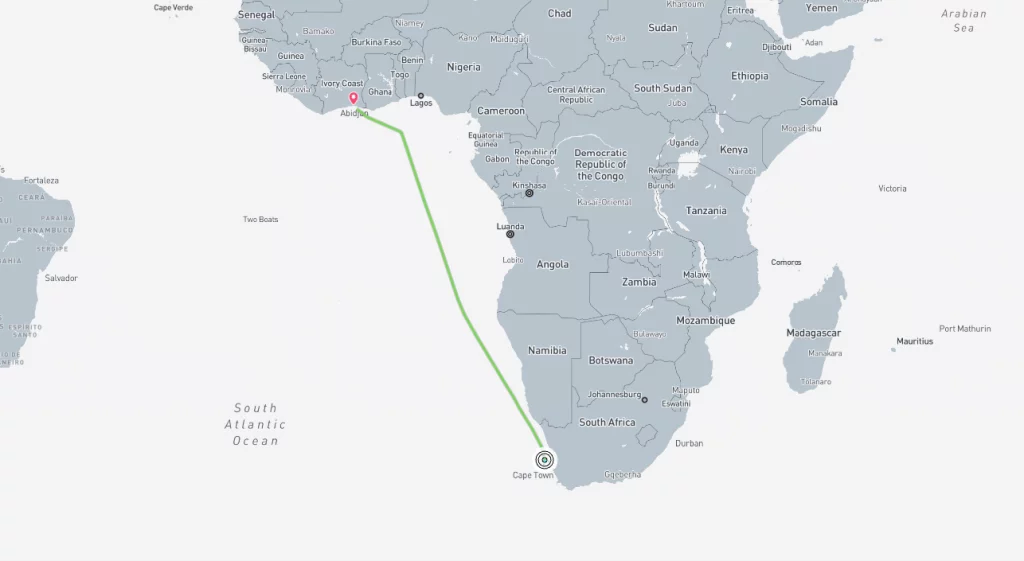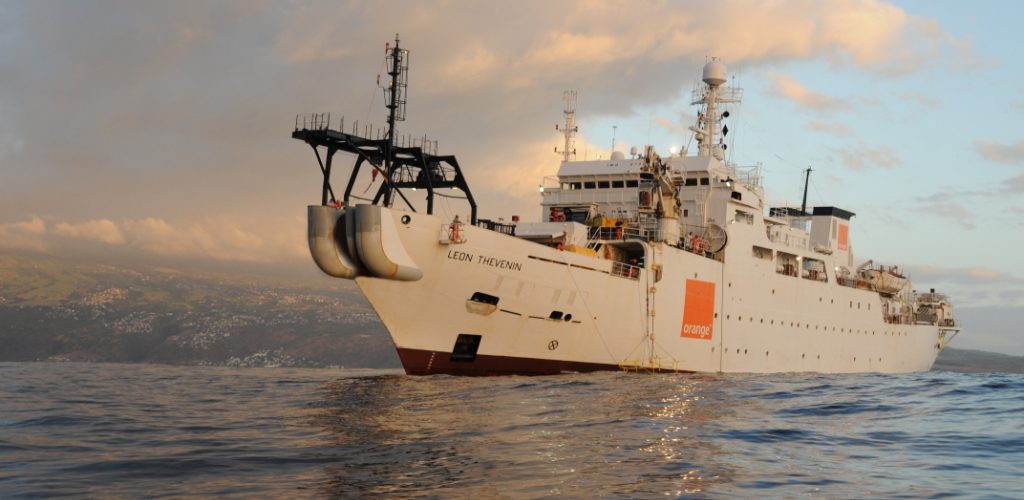Voyageto Restore Connectivity: TheLéonThévenin's Missionto Repair Africa's Undersea Cables
The repair mission for the undersea cables that recently severed, plunging South Africa and several other African countries into digital darkness, has commenced. The Léon Thévenin, operated by Orange Marine, embarked from Cape Town, South Africa, laden with the crucial fibre optic cable needed for repairs, setting its course for the waters near Abidjan, Côte d’Ivoire.
Departing on the evening of 19 March 2024, the vessel is on a crucial journey to mend the connectivity lifelines represented by the four submarine cables: West Africa Cable System (WACS), Africa Coast to Europe (ACE), MainOne, and SAT–3. These cables, vital for connecting African nations with Europe and beyond, went offline simultaneously on 14 March 2024, underscoring the fragility of global digital infrastructure.

Equipped to operate in varying depths—from as shallow as 10 meters to the profound depths of 7 kilometers—the Thévenin is armed with an array of tools essential for undersea cable repair. These include grapnels, buoys, ropes, dead-weights, and a sophisticated remotely operated vehicle designed for the intricate tasks of detecting, cutting, recovering, jointing, and testing the submerged fibre cables.
While the Thévenin forges ahead, another vessel, Global Marine’s CS Sovereign, is also expected to join the repair efforts, although it remained docked in Portland, England, as of the last update.
The journey to repair these undersea conduits is not just a technical challenge but a race against time, with the backdrop of earlier disruptions in the region. Notably, the Seacom, EIG, and AAE–1 cables on Africa’s east coast were compromised under suspicious circumstances, possibly linked to hostile actions in the Red Sea, further straining the continent’s network capacity.
The cause of the recent cable breaches, suspected to be seismic activity, underscores the unpredictable threats to our underwater digital highways. While human factors like anchoring or fishing have been ruled out due to the depth at which the break occurred, the definitive cause remains to be confirmed pending a detailed examination during the repair process.
Repair timelines stretch over several weeks, with varying estimates suggesting a three to five-week window before normalcy can be restored. This projection aligns with the insights from Ghana’s communications regulator and Telkom, both of which anticipate the restoration efforts could extend into mid-April 2024.
The Léon Thévenin’s previous endeavors, which included repairing similar breaks, hint at the complexity and duration of the task ahead. With the current site of the breaks further from the coast than previous incidents, the logistics and time required for repair are considerable.

As this crucial repair mission unfolds, it serves as a reminder of the intricate, often unseen, infrastructure that powers our connected world and the relentless efforts of those who maintain it. The journey of the Léon Thévenin is more than a technical expedition; it’s a quest to reconnect continents and restore a semblance of digital normalcy to millions.
link to mybroadband source



